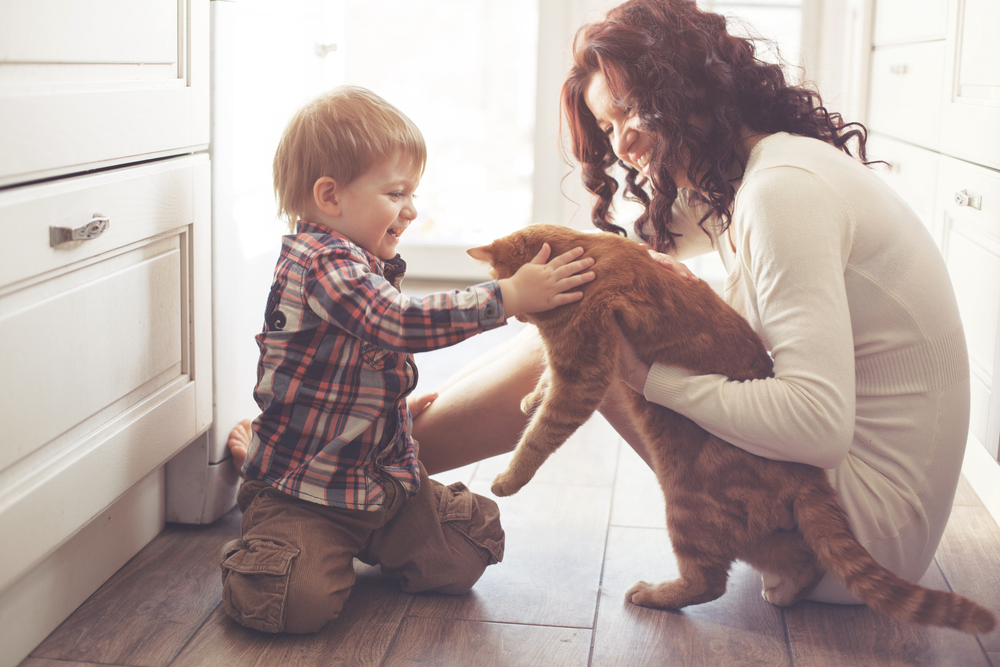Fear, anxiety, and stress are uncomfortable emotions that all pets experience to varying degrees at some point. Typically, these emotions are normal, temporary responses to a perceived threat or circumstance. However, when these responses persist or return, they can negatively impact day-to-day life, and intervention may be required for severely distressed pets. Read on for definitions of these three unpleasant feelings, along with potential causes, signs, and treatment options. Keep in mind that these three states can occur in combination:
- Fear — A disagreeable emotion that occurs in anticipation of a danger or threat, whether real or perceived, fear typically occurs suddenly, stimulated by a loud noise or sudden touch, for example.
- Anxiety — A person or a pet becomes anxious in anticipation of a future danger or threat. In pets, the most commonly diagnosed anxiety disorder is separation anxiety, which occurs when a pet exhibits destructive or distressful behavior when left alone for long periods.
- Stress — Stress is a state of emotional and/or physical tension resulting from a particular circumstance. Many pets become stressed in certain scenarios for which they have a negative association.
Occasionally, fear can persist, and pets can suffer from a profound or idiopathic fear of unknown cause.
What causes fear, anxiety, and stress in pets?
Pets can experience these troublesome emotions for a variety of reasons. Examples include, but are not limited to:
- Traumatic experiences
- Lack of appropriate socialization as a puppy
- Thunderstorms, fireworks, or other loud noises
- Car rides
- Certain people, such as children or men
- Boarding or daycare facilities
- Veterinary offices
- Crates or enclosures
- Genetics
- Age-related dementia, or cognitive dysfunction
- Nervous system abnormalities
- Illnesses that may exacerbate fear, anxiety, or stress
What are the signs of fear, anxiety, and stress in pets?
Clinical signs of these conditions can vary widely. Many pets exhibit mild, temporary signs, while others are debilitated.
Mild signs may include:
- Lip-licking
- Yawning
- Squinting or blinking
- Panting
- Whining
- Shedding
- Pacing, or moving slowly
- Unwillingness to accept treats
- Flattened ears
- Lip-lifting
- Dilated pupils
- Drooling
- Cowering
- Barking or hissing
- Raised hackles
- Diarrhea
- Growling, lunging, or snapping
- Forward stance
- Swatting
- Hardened stare
- Incontinence (i.e., urine or defecation)
What are the treatment options for fear, anxiety, and stress in pets?
Depending on your pet’s clinical signs and the effect on her day-to-day life, your veterinarian may recommend a variety of options, including:
- Behavior training, including desensitization and counterconditioning to encourage a positive reaction
- Referral to a board-certified veterinary behaviorist
- Pheromone sprays or diffusers, such as Adaptil or Feliway
- Calming supplements, such as Zylkene or Rescue Remedy
- Calming probiotics, such as Purina Calming Care
- A ThunderShirtr jacket, or similar product
- Behavior-modification medications
How can I prevent my pet from experiencing fear, anxiety, and stress?

For many pets, these uncomfortable emotions can be prevented in multiple ways, including:
- Early socialization — Expose your young pet to as many people, places, and pets as is safely possible. Ensure each experience is positive by rewarding your pet with treats, playtime, or encouraging words.
- Make the crate a safe haven — Your pet’s crate or enclosure should be a retreat for when she is stressed or needs a break—never use the crate as a punishment tool, or a place she is kept when you leave the home. Encourage your pet to love her crate by adding bedding, toys, and treats, as long as she won’t destroy or ingest the materials.
- Don’t use force — Learn to read your pet’s cues so you can recognise when she is uncomfortable in a situation. Never force an interaction with another dog or person.









Leave A Comment